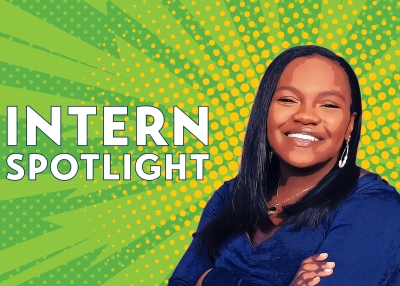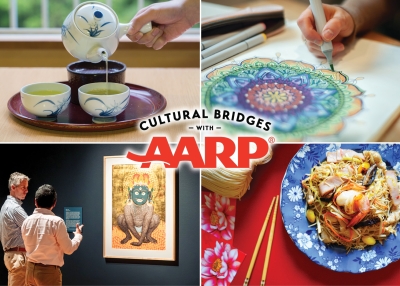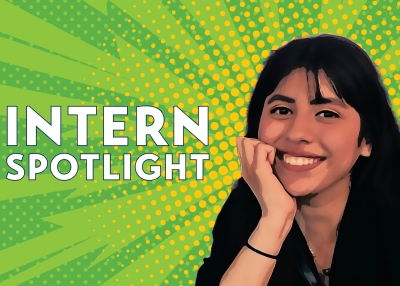SFSU's Russell Jeung Calls for Community, Compassion in Countering Anti-Asian Racism
Asia Society at Home
Learn More
HOUSTON, April 24, 2020 — Asia Society Texas Center hosted a program on confronting anti-Asian racism in the time of coronavirus in the fourth week of its COVID-19 webcast series. Dr. Russell Jeung, chair and professor of Asian American Studies at San Francisco State University (SFSU), joined Chris Tomlinson of the Houston Chronicle to discuss the uptick in racialized incidents directed toward Asian Americans as well as the broader historical and geopolitical contexts. He spoke on the steps people could take to address the issue and help prevent the harm that could result.
Rising anti-Asian sentiments related to coronavirus
Dr. Jeung’s department at SFSU, in partnership with nonprofits Asian Pacific Policy and Planning Council (A3PCON) and Chinese for Affirmative Action, launched the Stop AAPI Hate reporting center on March 19 to track incidents of discrimination, harassment, and hate crimes that have spread along with COVID-19. In a little over a month, they have received more than 1,500 firsthand accounts from 45 states of incidents such as shunning and verbal assaults, use of racial slurs, discrimination in the workplace, and even physical assaults including being spit or coughed at. In Midland, Texas, an individual stabbed a family of four he believed to be Chinese. Though the reporting center is focused on the U.S., some reports have also come from outside of the country, reflecting the global breadth of the issue.
What is driving this behavior? Where is the racism coming from?
Because the coronavirus originated in China, many people began associating the virus with the country and the people, Dr. Jeung explained. When this association is made frequently, then further reinforced through influential platforms with the use of language such as “Chinese virus,” it becomes a neurological reaction to associate the virus with that place or people. According to Dr. Jeung, it is often not an intentionally racist response, but a fear-based one: When threatened, people will not pause to think rationally but will shift into a fight-or-flight mode. This often looks like shunning or avoiding people they think are Chinese and therefore more associated with the virus (flight), or by an attack, whether verbal or physical (fight). He noted that these incidents were not isolated to the U.S. or the West — in China, xenophobia and racism had also led to targeting of African communities.
Dr. Jeung clarified that the neurological response does not excuse bad behavior, and pointed out that these implicit biases — which we are all affected by — can be overcome with education. He emphasized the importance of checking our biases by pausing in moments where an automatic reaction would take over, and practicing empathy instead.
Providing historical and geopolitical context
Tomlinson raised the broader geopolitical role of U.S.–China relations in racializing the discussion around the coronavirus. Dr. Jeung agreed that political rhetoric has contributed to the issue, as both major political parties, particularly in a presidential election year, do not wish to appear “weak on China.” Politicians’ strong criticism of the Chinese government for its initial handling of the COVID-19 cases has contributed to the public association of the virus with China and Chinese people, and then on to Chinese people living in the U.S. as well as Asian individuals more broadly.
Additionally, Dr. Jeung said the history of the “yellow peril” stereotype in the U.S. is also a factor in amplifying this issue. He laid out the fear in the 1800s of “nameless, faceless hoards” invading the West from the East, often linked to ideas of the Chinese being carriers of disease. This was a basis for the Chinese Exclusion Act of 1882, the U.S.’s first federal legislation enacted against a specific ethnicity. He noted the historical patterns and precedents of a disease driving fear, leading to policies singling out immigrants and racializing a group of people as threats or disease carriers.
Dr. Jeung warned of the dangers of the stigma and vilification of a group of people, as it can have genuine life-or-death consequences. A blanket refusal to accept personal protective equipment (PPE) from China puts frontline healthcare workers, already facing shortages of necessary PPE, at greater risk, he said; dehumanizing rhetoric leads to physical attacks and harm directed at Asian Americans, including children and the elderly. Moreover, Dr. Jeung added, a misunderstanding of the coronavirus as tied only to Chinese people could expose individuals to risk of catching or transmitting COVID-19, as the virus does not discriminate between ethnicities.
How do we combat this stigma? What can we do as individuals, both Asian and non-Asian?
In response to numerous audience questions, Dr. Jeung explained how to address and combat anti-Asian racism. It is vital to denounce inflammatory rhetoric, he said, and particularly with regard to the pandemic, leaders needed to respond with science and data, not fear. For example, the CDC has issued guidance on the need to reduce stigma and use correct terminology in reference to the virus, such as “coronavirus” or “COVID-19.” As such, Dr. Jeung said that individuals could ask their government to proactively condemn racist behaviors and language. He added that while elevating stories such as Asian American groups organizing donations of masks for COVID-19 relief shone a light on positive behaviors, it is not incumbent on the targeted groups to prove themselves worthy of dignity and respect. Rather, it is the responsibility of those acting in racist ways to be held accountable for their own words and actions.
Communities should also come together, he said. Whether in multicultural areas like major cities or in more rural communities, Dr. Jeung recommended reaching out to national Asian American organizations for resources and support. Additionally, finding allies in the local community — such as faith-based organizations, advocacy or political groups, or other communities of color — is an opportunity to build better empathy and solidarity, he said. COVID-19 has revealed some of the inequities in society, with Black and Native communities experiencing higher fatality rates from the virus and Asian communities being scapegoated. “We’re all interconnected, we’re all susceptible,” he said.
Lastly, Dr. Jeung highlighted the ability of bystanders to intervene when witnessing acts of discrimination or harassment, and for compassionate conversations with friends and loved ones when encountering misinformation or prejudice. To reach people, he emphasized the power of sharing personal stories and experiences over challenging with facts or a combative attitude. Taking on social media battles might feel futile, he said, and instead encouraged uplifting others, sharing hashtag movements, and modeling positive behaviors with children on the importance of treating all people with respect and empathy.
Download a non-comprehensive list of resources regarding anti-Asian racism »
Business and Policy programs are endowed by Huffington Foundation. We give special thanks to Bank of America, Muffet Blake, Anne and Albert Chao, ConocoPhillips, ExxonMobil, Nancy Pollok Guinee, United Airlines, and Wells Fargo, Presenting Sponsors of Business and Policy programs; Nancy C. Allen, Chinhui Juhn and Eddie Allen, and Leslie and Brad Bucher, Presenting Sponsors of Exhibitions; Dr. Ellen R. Gritz and Milton D. Rosenau and Wells Fargo, Presenting Sponsors of Performing Arts and Culture; and Mitsubishi Corporation (Americas), Presenting Sponsor of the Japan Series. General support of programs and exhibitions is provided by The Brown Foundation, Inc., The Hearts Foundation, Inc., Houston Endowment, Inc., the City of Houston through Houston Arts Alliance, McKinsey & Company, Inc., National Endowment for the Arts, Texas Commission on the Arts, Vinson & Elkins LLP, and Mary Lawrence Porter, as well as Friends of Asia Society.
About Asia Society at Home
Though Asia Society is temporarily closed, we are dedicated to continuing our mission of building cross-cultural understanding and uplifting human connectivity. Using digital tools, we bring you content for all ages and conversations that matter, in order to spark curiosity about Asia and to foster empathy.
About Asia Society Texas Center
With 13 locations throughout the world, Asia Society is the leading educational organization promoting mutual understanding and strengthening partnerships among the peoples, leaders, and institutions of Asia and West. Asia Society Texas Center executes the global mission with a local focus, enriching and engaging the vast diversity of Houston through innovative, relevant programs in arts and culture, business and policy, education, and community outreach.




